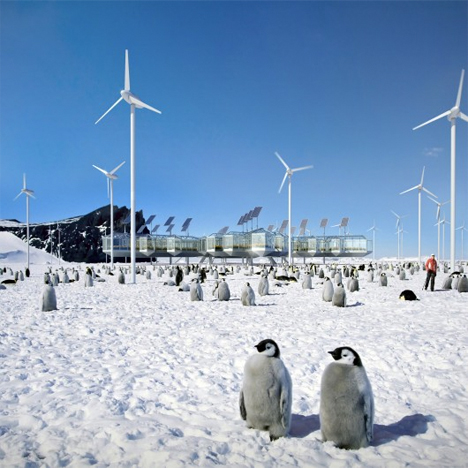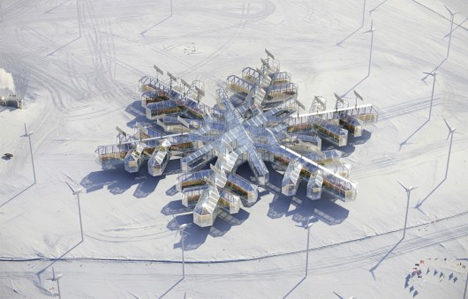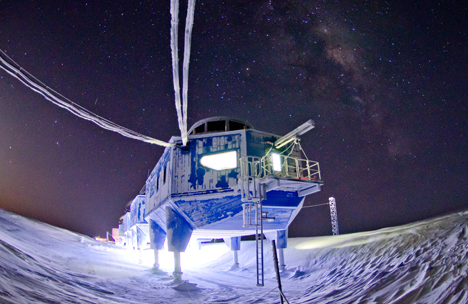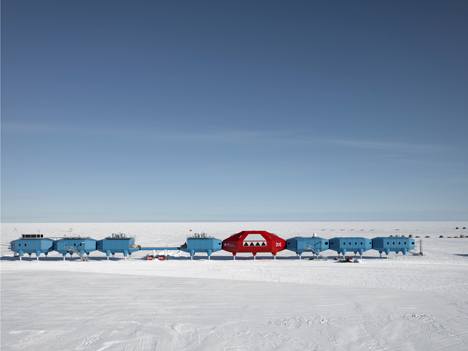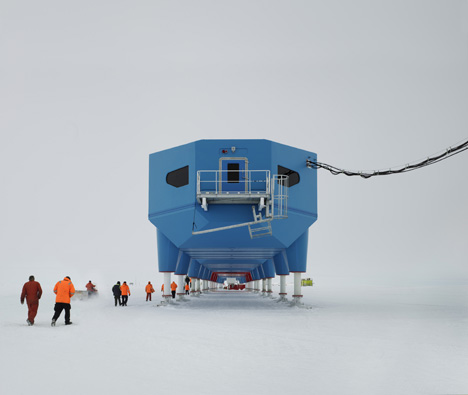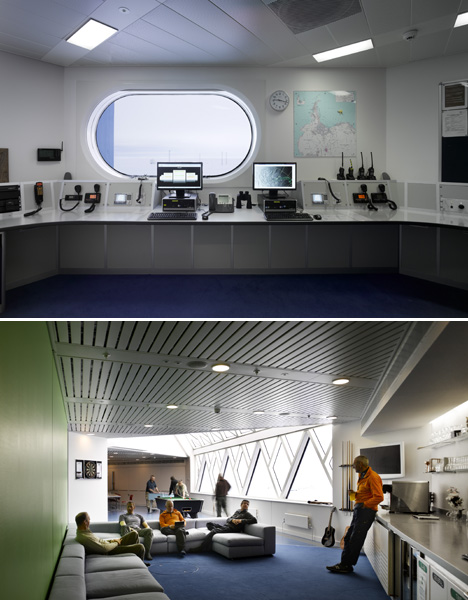The most remote and climactically unforgiving place in the world, Antarctica has served as a setting for only the hardiest and most practical of architecture since its initial exploration in the 19th century. An exhibition at this year’s Venice Architecture Biennale examines how the man-made structures of the continent have evolved over the decades since, and how aesthetics could come into play in the future, adding some form to all that function.
‘Anarctopia’ is a pavilion featuring a model of the British Antarctic Survey’s Halley VI Research Station by Hugh Broughton Architects as well as work by 15 international architects and artists examining the provisional nature of architecture in Antarctica and new design proposals that go beyond the scientific, industrial and military missions that have directed the continent’s utilitarian architecture in the past.
Directed by artist Alexander Ponomarev and architect Alexey Kozyr, the pavilion offers visions of snowflake-shaped structures covered in solar panels nestled into a snowy landscape dotted with wind turbines and penguins. The organizers hope that the project will have an impact on the design of real stations in the future. “Among enthusiasts and unbolt schemes dwells the promise of a new Antarctic man.”
And while most of us will never get to explore the actual Halley VI Research Station in Antarctica, visitors to the Biennale can get up-close and personal views of models of the world’s fist mobile research center, which opened in 2013. The pods that make up the station are set on adjustable ski-like feet so they can be relocated inland to avoid being stranded on an iceberg, and raised above high snowfall accumulations.
